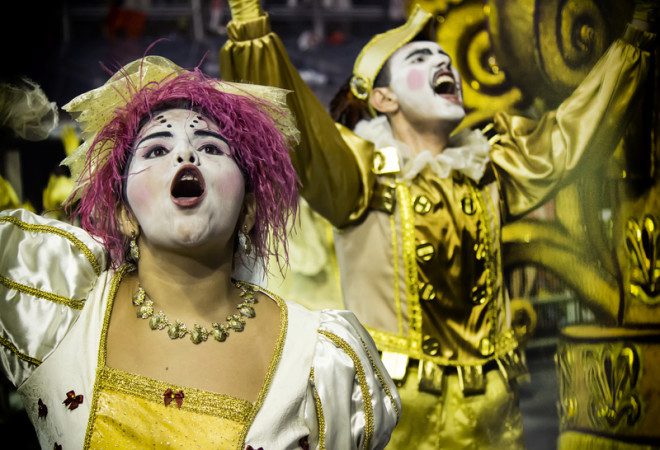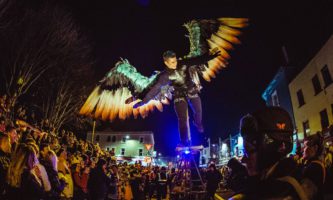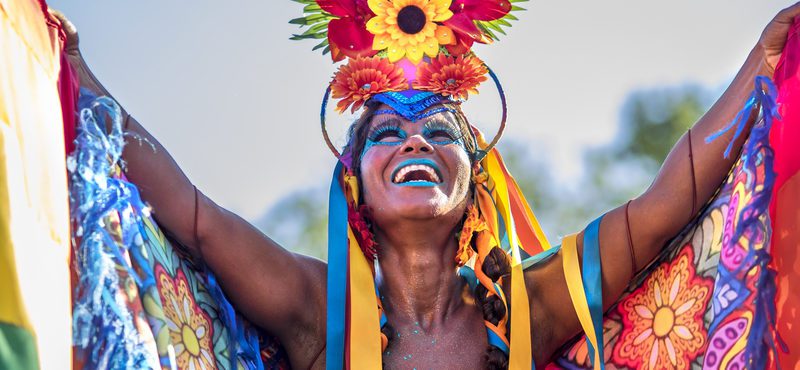5 alternative destinations to enjoy Brazilian Carnival
8 anos atrás
Seguro Viagem
Sabia que é obrigatório ter um seguro viagem para ir pra Europa?
It is not a secret that Brazilians really know how to party, especially when it comes to Carnival! Every year the celebration brings millions of visitors from all over the world to the country. But many tourists can be surprised that beyond the spectacular and colourful parade in Rio, there are many other cities to celebrate Carnival in Brazil and have a lot of fun. That is why today we are mentioning here some of the best!
Recife and Olinda
Capital of Pernambuco and located in the sunny Northeastern region of Brazil, Recife has one of the most democratic carnival street parties in the country, as there is no need to pay for a ticket to enjoy the celebration and have fun.
The city is also well known for its blocos (organized groups following a band) and one of them, called ‘Galo da Madrugada’, is the biggest in the world, with an estimated 2 million participants joining the celebration each year. Unlike Rio, where the main rhythm is Samba, in Pernambuco, be ready to enjoy Frevo, an electrifying dance with African and acrobatic influences, performed really fast often using an open umbrella and frequent legs and arms movements.
Also located in Pernambuco, Olinda is a well preserved and UNESCO heritage colonial town famous for its carnival with folkloric giant dolls parading through the streets. People there usually start partying a week before Carnival and end a week later.
Ouro Preto
The historical city of Ouro Preto in Minas Gerais state has one of the most traditional Carnival celebrations in Brazil.
There visitors usually buy packages that include unlimited drinks, accommodation in shared bedrooms and parties all week. The parties continue onto the streets of Ouro Preto, where they mix with the town’s traditional Carnival blocos, such as Zé Pereira dos Lacaios, the oldest Carnival bloco in the country, active since 1867.
São Paulo

São Paulo also celebrates carnival in great style. Image: Samystclair | Dreamstime.com
Financial heart of Brazil, São Paulo is not only about business and also celebrates Brazilian Carnival in great style.
Similar to Rio, the city also has various samba schools that every year uses a different theme for their presentation and completes a huge and multicoloured parade in the Anhembi Sambadrome on the Friday and Saturday night of the week of Carnival
Over the last few years, hundreds of themed street parties, also known as blocos, are getting more popularity around the city, attracting around 4 million people to some of its main streets. Despite existing elsewhere in the country, blocos are special in São Paulo for their diversity and variety, particularly when it comes to music, with a lot of rhythms being performed during the celebrations.
Salvador
Around 2 million people are attracted to Salvador’s Carnival party that lasts six consecutive days, when from 5 pm to 5 am dozens of bands make a parade along the streets, playing on big trucks, called trios elétricos. For the entire week, people follow the trios dancing, drinking and kissing until they are tired, but they get up the next day and start everything again.
There, you can simply dance on the streets with the crowd for free or you can stay inside a safety area surrounding the trio, protected by bodyguards and isolated from the crowd. However, in this case it is necessary to buy a “pass”, called ‘Abada’, which consists of a colourful top that identifies you as a member of the trio elétrico.
The price of the ‘Abadas’ range between R$ 50 and R$ 400 per day, depending on the artist playing at the trio, and the time the parade takes place during the carnival of Salvador. So, be ready to spend a lot of money around there!
Manaus
If you want to have a unique experience of Carnival, you should visit Manaus, capital of Amazonas, located in the middle of the Amazon Rainforest.
The city holds a very famous and competitive parade, but, differently from Rio, instead of samba, the tradition in Manaus is to celebrate the local legend about a resurrected ox, whose tale is told through music and flamboyant costumes, all based on local Amazonian folklore and indigenous culture.
Imagem principal via Dreamstime
Encontrou algum erro ou quer nos comunicar uma informação?
Envie uma mensagem para [email protected]
Seguro Viagem
Sabia que é obrigatório ter um seguro viagem para ir pra Europa?
Este artigo foi útil?
Você tem alguma sugestão para a gente?
Obrigado pelo feedback! 👋
O que ver em seguida
-
84% dos moradores da Irlanda estão preocupados com a crise do custo de vida, aponta pesquisa
Destinos pelo Mundo
84% dos moradores da Irlanda estão preocupados com a crise do custo de vida, aponta pesquisa
Uma pesquisa realizada pela Ipsos B&A para a Comissão Irlandesa de...
2 meses atrás
-
Índice de Paz Global 2025: saiba quais são os países mais pacíficos do mundo
Destinos pelo Mundo
Índice de Paz Global 2025: saiba quais são os países mais pacíficos do mundo
O mundo está menos pacífico em 2025. Essa é a principal conclusão do Global...
2 meses atrás



























